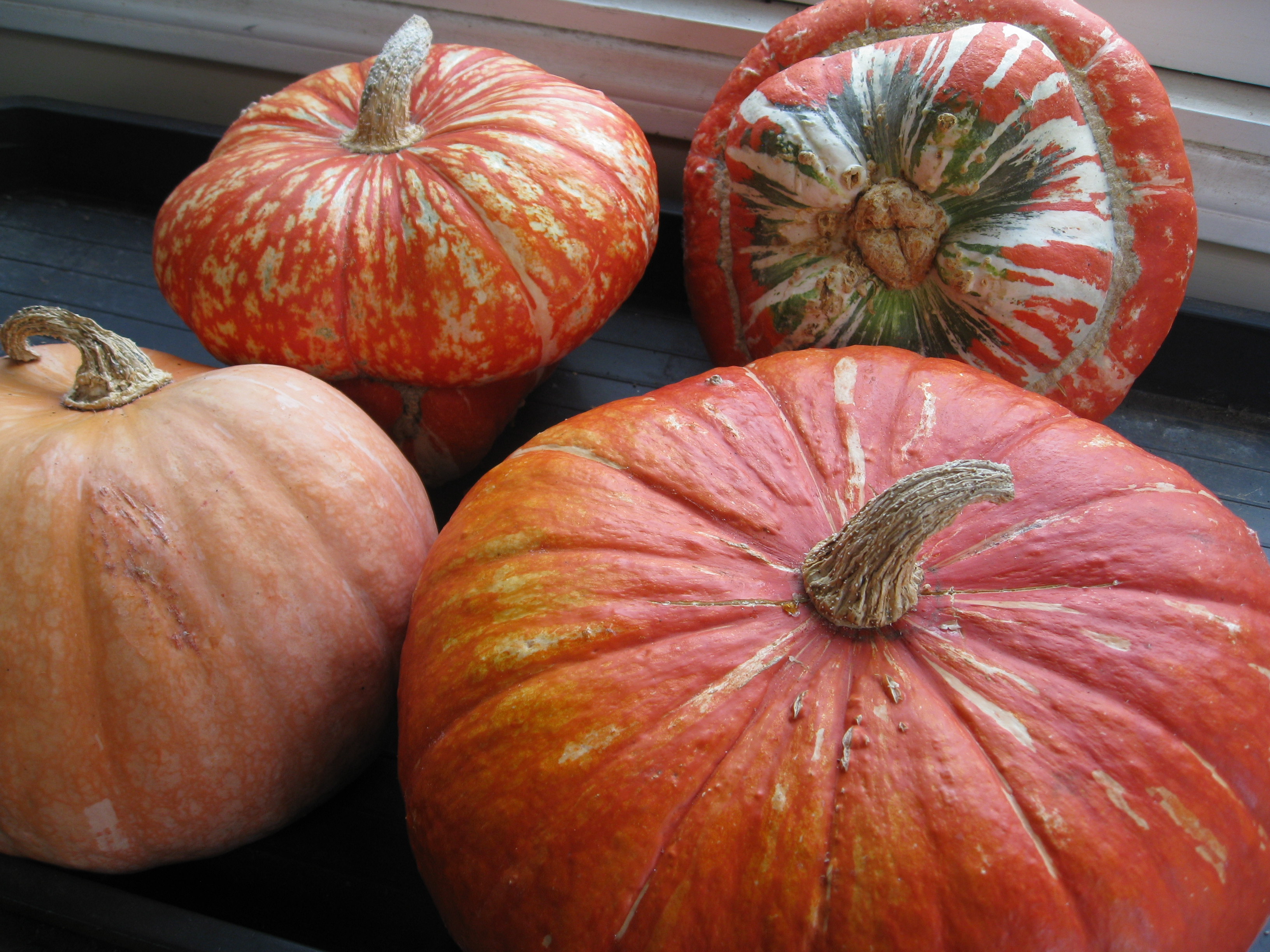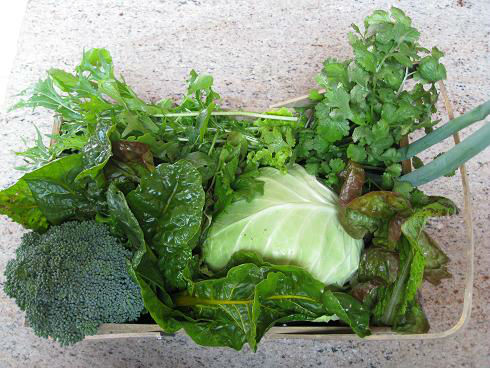![]()
In this issue:
- August in the Garden
- Planning for Fall
- Gardenerd Tip of the Month: Heirloom Expo
- Gardenerd Product of the Month: Gardening for Geeks
1. August in the Garden
Holy cow, it’s hot out there! Thus the title of this month’s newsletter: we’re not gardening. We’re looking out the window longingly, wishing the cucumbers weren’t droopy, hoping the watermelons keep setting fruit in this heat, and contemplating as many no-cook dinners as possible. It’s Caprese salads, tomato gazpacho, and raw kale salads. It’s cucumber citrus water, raita, and garden fresh lasagna with raw zucchini as the noodle.
In our Test Garden, things are looking pretty sad out there. We missed the window to plant more summer crops back in June, so there are some empty or dead patches in the garden. That said, summer colors are showing strong on our tomatoes and peppers. We harvested our first Fuji apple and it was delicious. Our winter squash has died back, leaving behind brightly colored Turban squashes, acorns and Delicatas piled high.
Now is the time to start planning or planting for fall. Pour a glass of lemonade and map out your fall plot. It’s time to start seeds if frost is coming your way. Warm-winter climates can plant as late as Thanksgiving, but the rest of you need to get going. Need help? Check out our fall planting guide below. If you’re local, you can join in one of our 2 Fall Garden Planning Workshops, just added! Either way, we’re here to help.
Happy Gardening,
Christy
2. Fall Planting Guide
Fall is right around the corner, and we’re anxious for a fresh supply of tender greens again. Soon we’ll be planting crops that grow best in cooler weather. In many places these crops will over winter just fine (frost areas need protection with floating row cover or insulated garden fabric). Here’s a list to get you thinking about your fall garden:
Lettuces – all sorts of gorgeous greens grow best in fall. We plant 14 varieties in October, then again in spring. Start seeds indoors in early to mid-September for October planting.
Peppery Greens – add some spice to your salads with mustard greens and arugula. They won’t bolt to seed like they do in spring.
Other Salad Stuff – try your hand at mache (A.K.A. corn salad for some reason), radicchio, and endive for some added interest. Chard grows well in fall and spring, if you have room for it. Spinach is a must for fall gardens.
Brassicas – broccoli, cauliflower, cabbage, collards, kale, Brussels sprouts, kohlrabi and turnips fall into this family. You’ll find few to no aphids on fall-grown brassicas. Just keep floating row cover handy to keep the cabbage moth at bay.
Root Crops – carrots, parsnips, beets, potatoes, and radishes all grow best in cooler temps. If you’ve had trouble growing these in spring, try fall. It’s just better.
Grains – wheat, quinoa, rye, triticale, amaranth, oats, and more – these grains can be grown as a cover crop or harvested in spring for good eating. Be adventurous! Give grains a try.
Bulb Veggies – onions, garlic, and shallots go in this fall. They’ll grow through winter into spring and will be ready to harvest in late spring/early summer. If that’s too much of a commitment, just grow green onions. They’re ready to pick in no time.
Vines – sugar snap and snow peas almost grow by themselves in fall. There’s nothing like snacking on them straight out of the garden on a cool late-winter morning. Frosty folks may find these too tender for cold-winter gardens.
Herbs – most herbs (except basil) do great in cooler weather. Cilantro and parsley won’t bolt to seed as quickly as they do in spring. Dill, oregano, rosemary, thyme and sage can all be planted in the fall garden.
Cover crops – if you aren’t growing a fall garden, plant cover crops. Even if you are growing a fall garden, plant cover crops. Fava beans, vetch, oats, peas; these all help build soil and some fix nitrogen. This is food for your compost bin. It means less work for you in the long run with great soil as the result. We dedicate at least 1 raised bed to cover crops each fall.
Perennials – late fall is planting time for perennials like strawberries, asparagus, artichokes, rhubarb and cane berries. Many bare-root fruit tree growers take orders in October for January delivery. Plan ahead (and order ahead) if you’re going to put in bare root plants or trees this fall.

3. Gardenerd Tip of the Month – Heirloom Expo
All this heat makes you want to get away, doesn’t it? Maybe now is a great time to plan an escape to the 5th Annual National Heirloom Exposition. If you’ve never been, you have to go. It’s like running away to the circus for gardenerds. This year, Christy will be speaking again on Thursday, September 10th at 4:00 p.m. in the Showcase Cafe. Her lecture will be all about growing vegetables in the drought. There will be a book signing at the book store following the talk. Last year all copies sold out, so get there early!
This year, Dr. Vandana Shiva will be the keynote speaker, talking about her work promoting heritage seed and her new book Soil Not Oil. Other highlights include amazing organic food, drool-worthy seed vendors, and amazing displays of vegetables the likes of which you’ve never seen.
Learn more in one place that you can possibly imagine at the Heirloom Expo. Hope to see you there.
5th Annual National Heirloom Exposition
4. Gardenerd Product of the Month – Gardening for Geeks
Need help figuring out how to plan and plant your fall garden? Gardening for Geeks will walk you through the process, step by step. Touted as a “logical, well-organized book” that gives you all the info you need to grow organically and sustainably, Gardening for Geeks is a hot-weather summer page-turner.
-
Stay tuned for more tips and tidbits from Gardenerd.com. Happy summer gardening!



